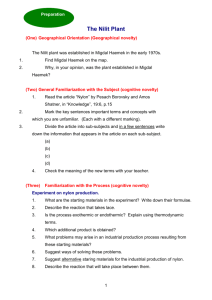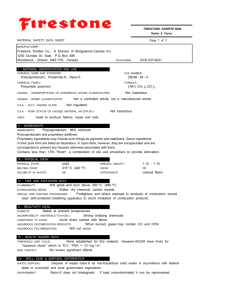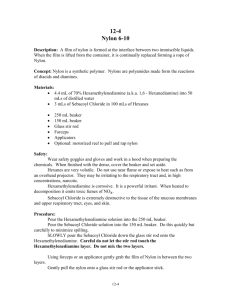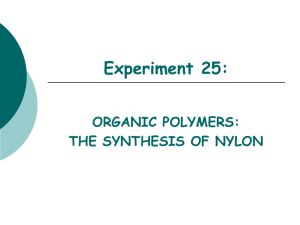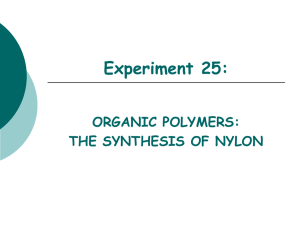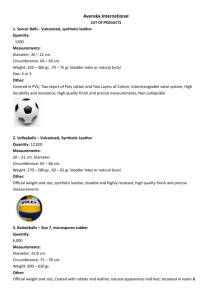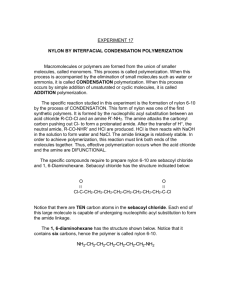Nylon Rope Trick
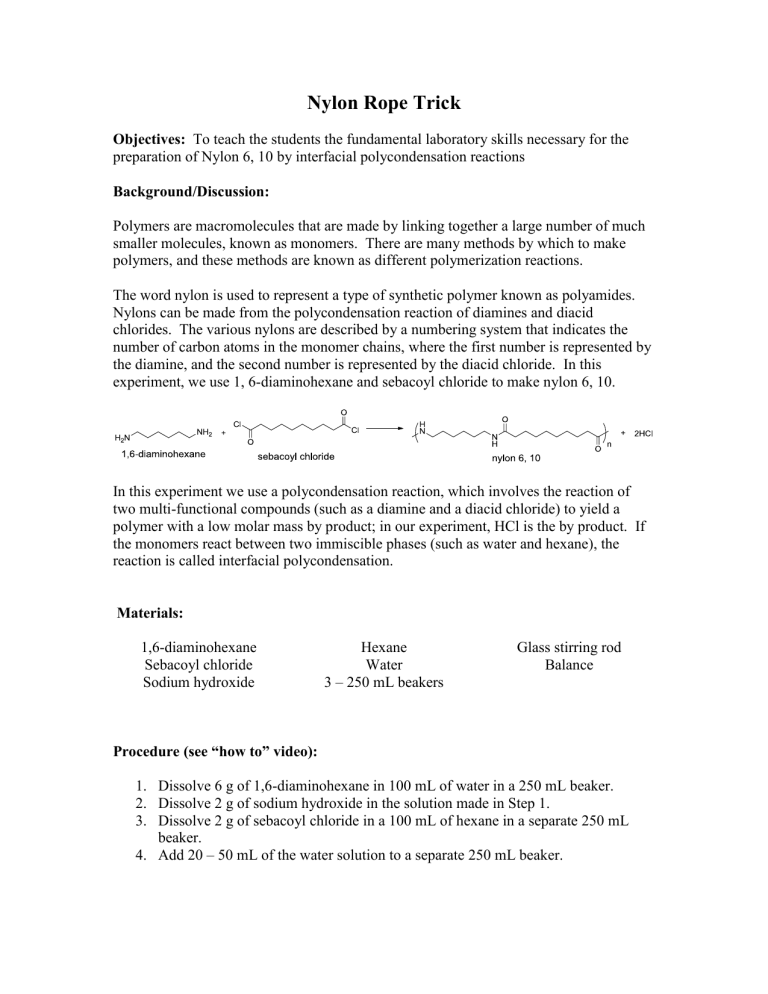
Nylon Rope Trick
Objectives: To teach the students the fundamental laboratory skills necessary for the preparation of Nylon 6, 10 by interfacial polycondensation reactions
Background/Discussion:
Polymers are macromolecules that are made by linking together a large number of much smaller molecules, known as monomers. There are many methods by which to make polymers, and these methods are known as different polymerization reactions.
The word nylon is used to represent a type of synthetic polymer known as polyamides.
Nylons can be made from the polycondensation reaction of diamines and diacid chlorides. The various nylons are described by a numbering system that indicates the number of carbon atoms in the monomer chains, where the first number is represented by the diamine, and the second number is represented by the diacid chloride. In this experiment, we use 1, 6-diaminohexane and sebacoyl chloride to make nylon 6, 10.
In this experiment we use a polycondensation reaction, which involves the reaction of two multi-functional compounds (such as a diamine and a diacid chloride) to yield a polymer with a low molar mass by product; in our experiment, HCl is the by product. If the monomers react between two immiscible phases (such as water and hexane), the reaction is called interfacial polycondensation.
Materials:
1,6-diaminohexane
Sebacoyl chloride
Sodium hydroxide
Hexane
Water
3 – 250 mL beakers
Glass stirring rod
Balance
Procedure (see “how to” video):
1.
Dissolve 6 g of 1,6-diaminohexane in 100 mL of water in a 250 mL beaker.
2.
Dissolve 2 g of sodium hydroxide in the solution made in Step 1.
3.
Dissolve 2 g of sebacoyl chloride in a 100 mL of hexane in a separate 250 mL beaker.
4.
Add 20 – 50 mL of the water solution to a separate 250 mL beaker.
5.
Gently pour the same volume of the hexane solution as the water solution on top of the water solution in the beaker prepared in Step 4, using a glass rod to pour down. Be careful not to disturb the interface between the two solutions.
6.
After the hexane solution has been added, gently draw a thread out of this interface using a glass rod. Using an empty beaker as a spool, slowly wind up the thread as you draw it out.
7.
After the entire polymer has been collected, wash it thoroughly with water and let it air dry.
8.
Unwind the dry thread and examine its physical properties.
Observations:
What kind of physical properties does the nylon have? Is it flexible? Strong? Brittle?
Potential post lab questions:
1.
Why might the nylon rope trick not be the commercial method of choice to make nylon?
2.
Are there other polymerization methods used to make nylon 6,10 and other types of nylons?
3.
Some types of nylon make strong fibers. Why?
Discussion:
Intermolecular forces are the reason that nylon can make such effective fibers. The most important intermolecular force in making nylon strong is hydrogen bonding. In hydrogen bonding, a hydrogen atom is covalently bound to an electronegative atom, such as nitrogen, oxygen, or fluorine. In some nylons, such as nylon 6, 10, the nitrogen-bonded hydrogen of one nylon chain will hydrogen bond very strongly with the oxygen atom of another nylon chain. These hydrogen bonds hold the nylon chains together very tightly causing the nylon to be very crystalline. This makes the nylon fibers very strong. In a nylon, such as nylon 7, 7, where there is a reduced capacity for hydrogen bonding to occur, the nylon is less crystalline and less strong.

